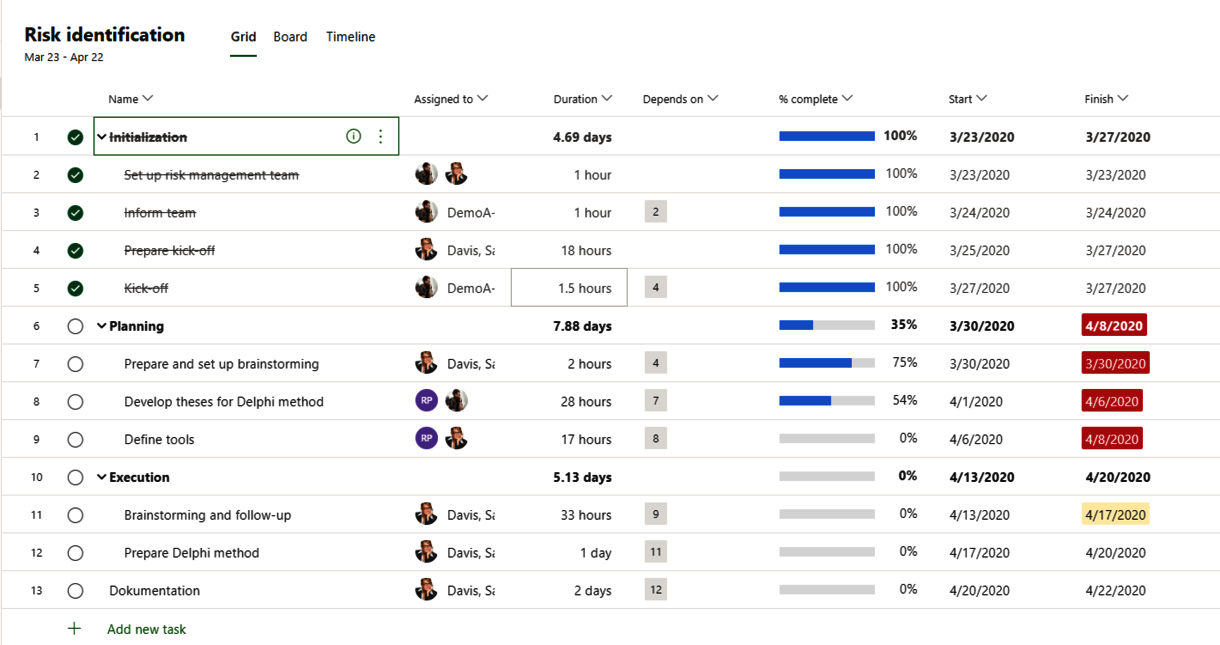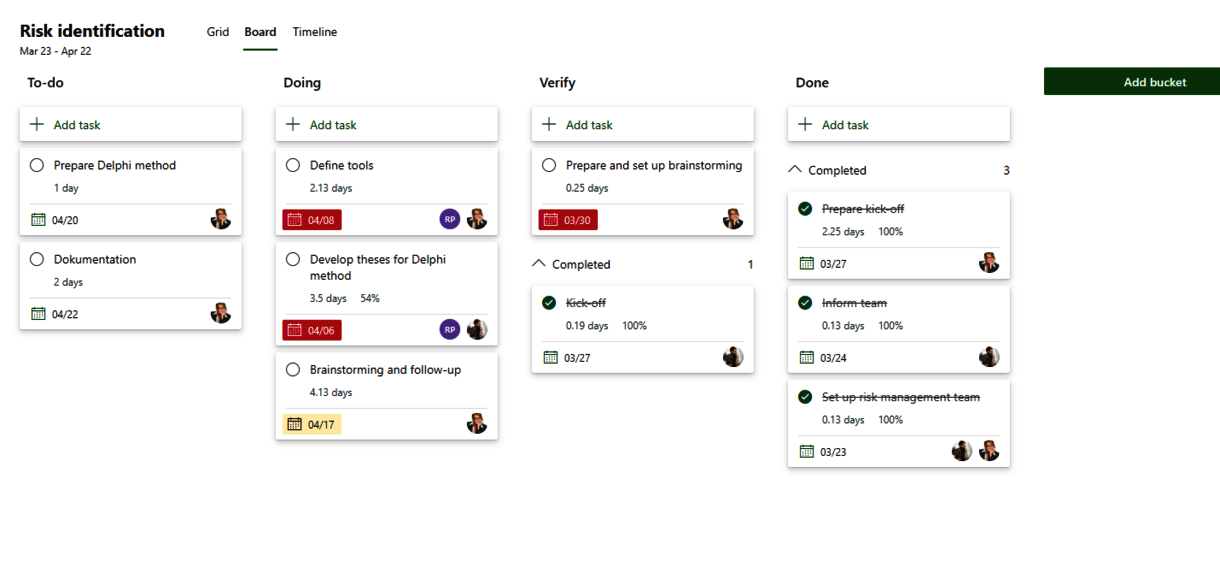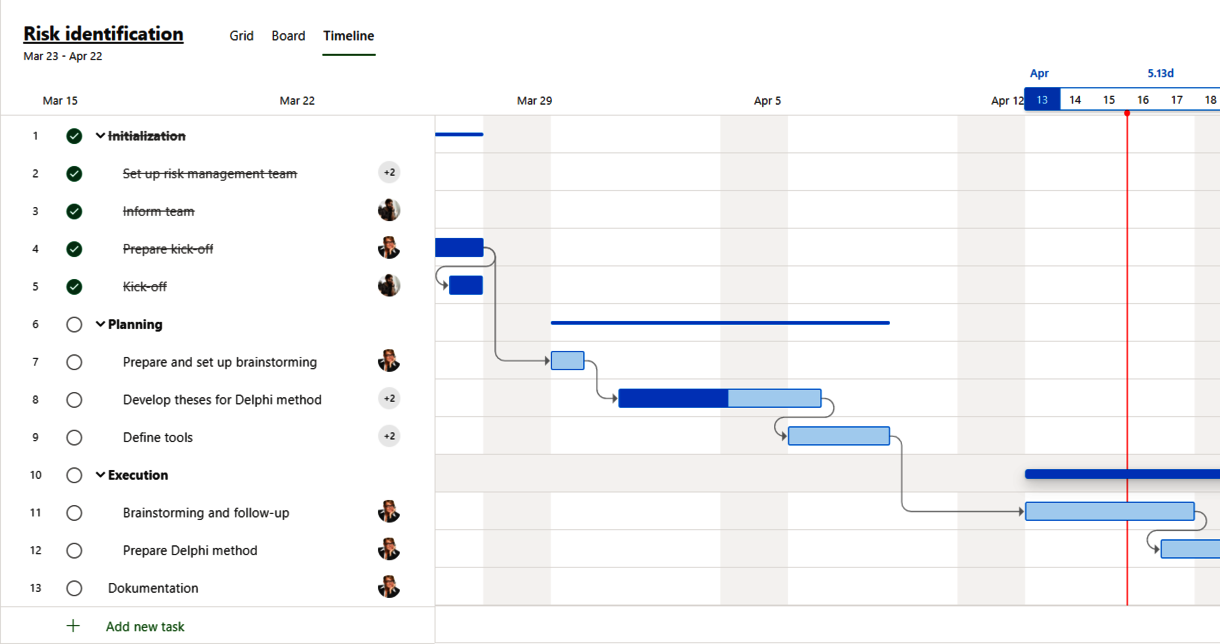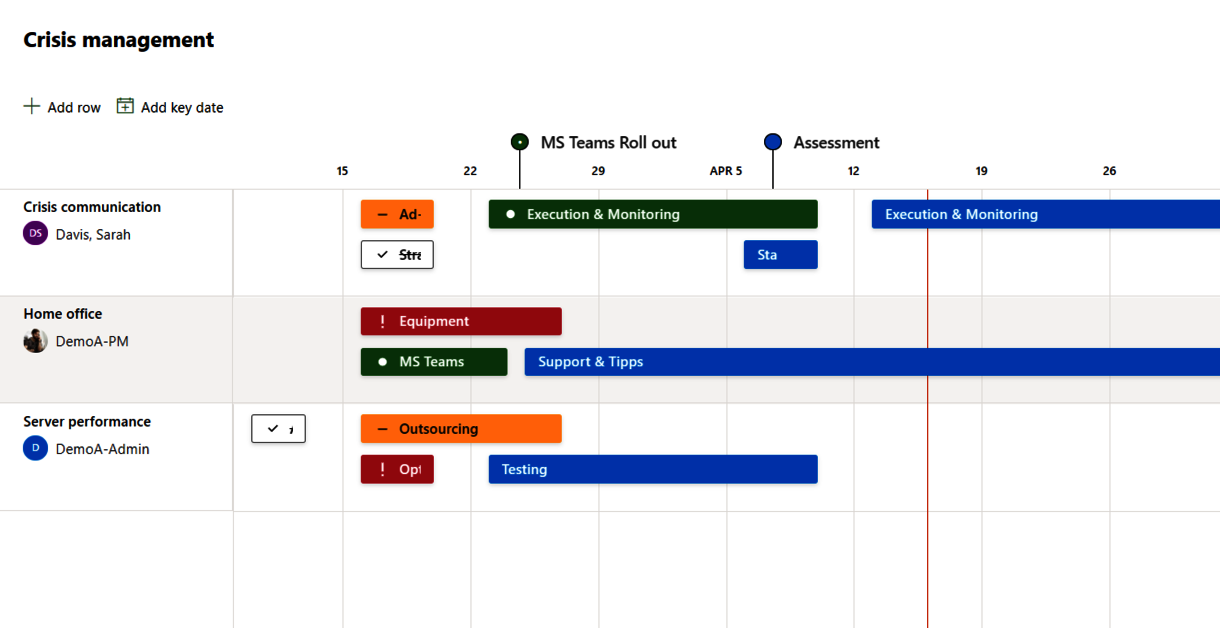No company is immune to economic, business and global crises. In these situations, they do not have much time to limit the impact of such a crisis. Their top priority is to initiate and plan crisis measures in order to secure the company's ability to act. And this is where easy-to-use project management solutions such as Project for the Web from Microsoft truly shine.
Virtual crisis management with Project for the Web
Rapid responsiveness with the digital “War Room”
Rapid response times and transparent planning are a must in crisis situations. A crisis unit consisting of the Managing Directors and department representatives must be convened in a matter of hours, and measures must be planned and delegated. Usually, this takes place in a physical location, a so-called “War Room”, but increasingly this room has moved into the virtual sphere. The ability to quickly provide the appropriate planning tool remains a big challenge in this context.
Successful crisis management depends on the close and intensive collaboration between the members of the crisis team. And it is not only in crisis situations that companies use Microsoft Teams to create digital “War Rooms”, in which groups and teams can collaborate independent of their workstation and location. One big advantage of Teams is that other Microsoft tools can be easily integrated, e.g. Project for the Web as the project management software.
While established planning tools must often be installed and require extensive training, Project for the Web can be used as an intuitive and Cloud-based tool without previous knowledge. This tool enables interdisciplinary crisis units (which may consist of marketing experts, lawyers, communication experts and members of the management team) to immediately start the planning process - with or without a project management background.

Taskboard for efficient structuring and prioritization
The members of the crisis unit can be invited on an ad-hoc basis as soon as a new project has been set up. The tasks are initially structured on the basis of taskboards. The taskboards in Project for the Web are customized depending on the requirements and the project. Using so-called Buckets, crisis management tasks are prioritized and clustered based on their contents. Other grouping and sorting options provide the crisis unit with a transparent overview at all times.
- Tip: Agile methods such as Kanban boards are ideal for depicting and optimizing the operation of the crisis management process.
Always in focus: the timeline
Once tasks have been compiled and structured, they must be correlated to each other and depicted on a time axis. This is followed by execution and tracking - aspects that are particularly important in crisis situations. Easy-to-follow timeline views in Project for the Web provide transparency regarding the current status at the project/task level in real time, and across teams.
In the case of larger crises, it may be useful to split the measures into several sub-initiatives, which are subsequently consolidated into a high-level roadmap. In this case, the roadmap tool from Microsoft offers control and transparency across multiple initiatives.




